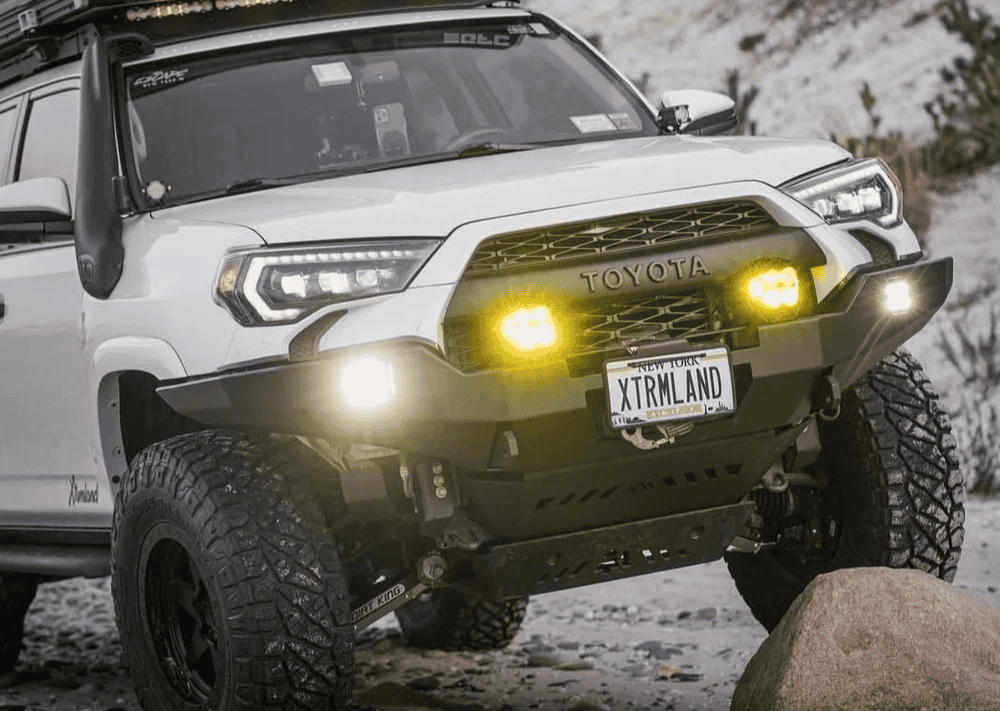Overland Vehicles

4x4 truck campers combine traction, ground clearance, and compact living into one platform. The four wheel drive chassis unlocks trailheads and high country routes where a traditional trailer would struggle. Success off pavement depends on two things working together: a solid match between truck and camper, and smart interior planning that keeps weight centered and low.
A truck camper’s shell can be hard side for quiet, insulation, and security, or pop up for lower height and better aerodynamics. Either way, the truck must carry the load within its payload and axle ratings. Long trips are easier when the layout places tanks and batteries near the axle line, reducing pitching on washboard and improving steering feel.
Cabover beds make use of space above the cab, while the box houses the galley, seating, storage, and possibly a bath. Rear overhang affects departure angle, so every pound aft of the axle matters. The best truck camper layouts account for this with balanced storage and careful appliance placement.
Hard side campers offer quiet travel, winter insulation, and ample cabinetry. They can support dry baths and bigger tanks but often ride taller. Pop up campers drop roof height for tighter trail work and lower center of gravity. That helps stability in crosswinds and reduces strain on suspension. Choose based on climate, noise tolerance, and how often you thread narrow forest roads.
Short bed trucks favor lighter shells with east west sleeping and compact galleys. Long bed trucks open options like north south sleeping, larger dinettes, and bigger tanks. Half ton trucks require careful weight discipline; three quarter ton and one ton trucks handle heavier plans, especially with single rear wheel setups tailored for off highway travel.
The phrases truck camper floor plans and truck camper layouts cover more than furniture placement. They shape handling, camp workflow, and rest quality on extended trips. Start with the bed. North south beds let both sleepers exit without climbing over, which is valuable during cold nights or quick morning starts. East west beds save space and can fit in shorter shells but limit access.
Dining and lounge areas come in several forms. A face to face dinette is simple and converts quickly to a guest bed. A U shaped dinette adds lounging comfort and works well on rainy days. Sofas or gaucho benches pair well with compact galleys in minimalist builds. Rear or side entry doors change traffic flow. Side entry opens room for a larger bath or gear closet at the back while rear entry can centralize weight.
Wet bath versus dry bath is a major call. Wet baths combine shower and toilet in one room to save space and weight. Dry baths separate them for comfort at the cost of mass and cabinet volume. If you travel often in freezing temperatures, a small insulated wet bath with a quality vent fan may strike the best balance.
North south beds favor long beds and taller cabovers. East west beds save length and can lower total height in pop up shells. Dinettes should sit over the axle whenever possible to protect ride quality. If you occasionally haul bikes or boards, look for layouts with removable table posts and under seat storage sized for long items.
Weight management decides how a 4x4 truck camper behaves on broken surfaces. Stay within gross vehicle weight rating and axle ratings after adding water, fuel, passengers, and gear. Check the camper’s center of gravity mark against the rear axle. Tanks belong low and near the axle line to reduce sway. Heavy batteries should live low and central as well.
Modern off grid power relies on lithium batteries, a smart DC to DC charger from the alternator, solar on the roof, and an inverter for outlets. Keep cable runs short and protected. Vent fridges and heaters properly and route exhaust away from dust zones. Four season packages with insulated windows, thermal curtains, and heated tanks extend the season without burdening the suspension when chosen carefully.
Suspension tuning improves stability with appropriate spring packs or airbags, quality shocks, and a rear sway bar on heavier rigs. Tires should fit the load index, and pressures must match axle weight. Recovery gear, a real spare, and an accurate tire gauge round out the safety list.
Thoughtful storage avoids rattles and re packing at every stop. Use drawers that latch, cabinets with positive catches, and bins sized to the galley. Keep daily use items at chest level and reserve high shelves for soft goods. A small exterior locker for dirty gear keeps the living area tidy.
For travelers who want expert hands on planning, OZK Customs builds truck based overland systems with the same care we bring to our van platforms. Our team designs interiors that protect handling, integrates off grid power that simply works, and fabricates smart storage that keeps essentials secure on rough roads. See our current approach on Overland Rigs and explore our Custom Overland Upfit process to understand how we tailor suspension, racks, lighting, and systems around your route. If you are comparing builders, here is Why Choose OZK Customs.
Your next step is simple. Share how you travel, where you camp, and what you carry. We will translate that into a balanced layout, stable ride, and a quiet, efficient cabin that turns 4x4 capability into comfortable miles.
Ready to turn a capable truck into a refined overland camper with smart layouts, tuned suspension, and reliable off grid power? Tell us how you travel. Our team will design and build a dialed rig that rides level, sleeps comfortably, and keeps you powered far from pavement.
ADDRESS:
6159 E Huntsville Rd, Fayetteville, AR 72701
PHONE:
(479) 326-9200
EMAIL:
info@ozkvans.com